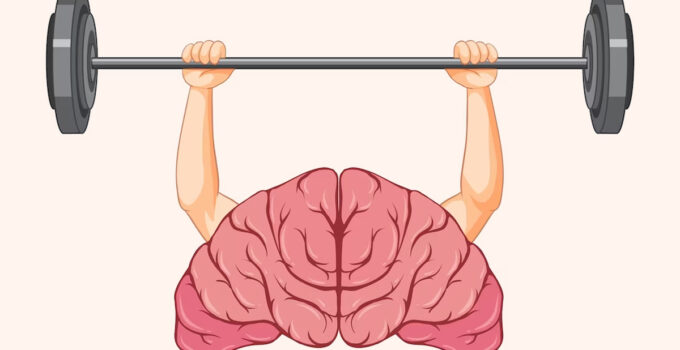The world of strength training is both vast and intricate, intertwining the fibers of science, discipline, and the human will. One of the most fascinating aspects of this field is the concept often referred to as ‘muscle memory.’ This term, while misleading in its simplicity, encompasses a complex process that allows practitioners to regain previously attained levels of strength and muscle mass at a faster rate after a period of inactivity. This article delves deep into this phenomenon, exploring its foundations, implications, and how it can be harnessed to optimize training outcomes.
Page Contents
The Essence of Bodily Recall in Strength Training

Source: roadcyclingacademy.com
At its core, the concept commonly known as muscle memory in the realm of bodybuilding transcends the literal interpretation of the words. It is not the muscles themselves that ‘remember’ in the same way our brains do, but rather a series of physiological and neurological adaptations that occur within the body. These adaptations enhance the efficiency and effectiveness of strength training over time. Learn more about muscle memory and its importance in your bodybuilding journey at Texas Bodybuilders.
Neurological Pathways and Strength Training
One of the initial stages of strength gain is the development of neural pathways. When an individual begins strength training, the initial increases in strength are largely attributed to the nervous system becoming more efficient at activating muscle fibers. This enhanced neural activation allows for greater strength output without a corresponding increase in muscle size, illustrating the significance of the nervous system in the early stages of training.
The Role of Satellite Cells in Muscle Adaptation
Satellite cells play a crucial role in the repair and growth of muscle fibers. When muscle fibers are subjected to the stresses of strength training, these cells are activated and contribute to the repair and growth process, leading to increases in muscle size and strength. This process is a key component of what is often termed muscle memory, as these adaptations create a physiological ‘blueprint’ that can be reactivated after a period of inactivity.
The Impact of Muscle Fiber Type on Training and Recall

Source: verywellfit.com
Muscle fibers can be broadly categorized into two types: Type I (slow-twitch) and Type II (fast-twitch). Each fiber type responds differently to strength training, with Type II fibers displaying a greater propensity for growth and strength increases. Understanding the distribution and behavior of these fiber types can provide insights into individual responses to training and the reactivation of strength and size after a hiatus.
Training Strategies and Optimizing Bodily Recall
Strategic training approaches can enhance the efficiency of reactivating previous strength and size adaptations. Techniques such as progressive overload, variation in training stimuli, and periodization can all contribute to a more effective re-engagement of the physiological mechanisms underlying the phenomenon in question.
Nutrition, Recovery, and Their Roles in Strength Reacquisition
Nutrition and recovery are pivotal in supporting the reactivation of previous adaptations. Adequate protein intake, balanced nutrition, and sufficient rest are all essential components in maximizing the body’s ability to regain lost strength and muscle mass, highlighting the interconnectedness of various lifestyle factors in the process of strength training.
Psychological Aspects of Re-engaging with Strength Training

Source: verywellfit.com
The psychological dimension of returning to strength training after a period of inactivity should not be underestimated. Motivation, self-efficacy, and the psychological readiness to re-engage with the demands of training are all critical factors that can influence the speed and effectiveness of regaining previous levels of performance.
Long-Term Implications and Potential Research Directions
The long-term implications of this phenomenon for training longevity and injury prevention are areas ripe for further research. Understanding how to optimize the reactivation of previous adaptations could have significant implications for training approaches, particularly for athletes and individuals returning to training after injury or extended breaks.
Exploring the Genetic Blueprint and Its Influence on Training Adaptability
Genetics play a pivotal role in determining an individual’s propensity for strength and muscle development. The genetic makeup can influence factors such as muscle fiber composition, hormonal responses, and recovery capabilities, all of which contribute to how effectively one can harness the phenomenon in question. Understanding one’s genetic predispositions can offer valuable insights into tailoring training and recovery strategies for optimized performance and re-engagement with previous physical achievements.
Technological Advances and Their Role in Understanding and Enhancing Training Recall

Source: linkedin.com
Recent advancements in technology have provided new tools and methodologies for studying and enhancing the reactivation of previous training adaptations. Wearable technology, data analytics, and sophisticated training software are now being used to monitor physiological responses, optimize training regimes, and provide personalized insights into maximizing the re-engagement process. These technological tools offer exciting possibilities for further refining our understanding and application of this complex phenomenon.
The Interplay Between Mindset and Physical Re-engagement in Training
The mental aspect of returning to strength training after a hiatus is as crucial as the physical. The mindset with which an individual approaches re-engagement can significantly influence their ability to reactivate and build upon previous adaptations. A positive, resilient mindset can enhance motivation, increase adherence to training regimens, and improve the overall effectiveness of re-engagement strategies. Understanding the psychological barriers and enablers to returning to peak physical form is essential for a comprehensive approach to harnessing the full potential of what is commonly known as muscle memory in the fitness world.
Closing Thoughts
In sum, the concept often referred to as muscle memory in the realm of bodybuilding is a multifaceted phenomenon encompassing a wide range of physiological, neurological, psychological, genetic, and technological factors. Each of these elements plays a critical role in how individuals can regain previously attained strength and muscle mass. By adopting a holistic approach that considers not only the traditional aspects of training and nutrition but also the influences of genetic predispositions and the potential of emerging technologies, individuals can more effectively harness this phenomenon. As the understanding of these complex interactions deepens, the potential for tailored, efficient, and effective training methodologies continues to evolve, offering promising prospects for athletes, fitness enthusiasts, and rehabilitative practices alike.




